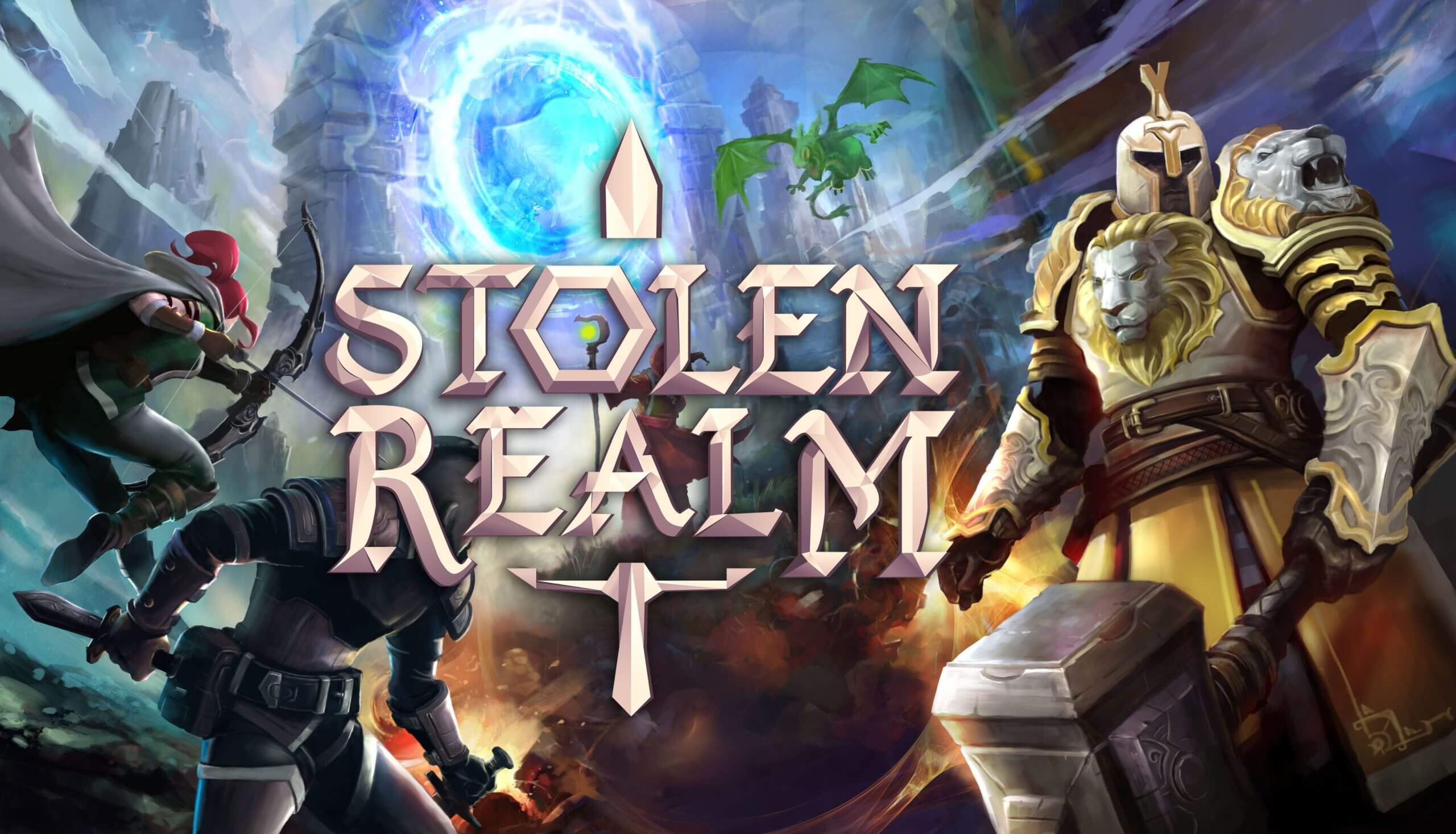A REALM OF FAMILIAR & NEW POSSIBILITIEs
► Stolen Realm delivers a recognisable SETTING that is a mix of conventional and generic fantasy that blend to form its own distinct GAMEWORLD. Numerous diverse biomes divide the map into separate regions that set the tone for each quest, module landscapes and the hubs within. They also constrict the enemy types to taking place in each area. Though don’t expect to see any dungeons to crawl through in the traditional sense.
► The STORY may not be to the level of a bon-a-fide RPG, but it does an admirable job of connecting the sequence of quests to one another. NARRATION receive the much needed gravitas of a heavy toned ‘Barry White’ vocal delivery. While the WRITING possesses no glaring mistakes the presentation is somewhat amateurish. Witty one liners deliver a sliver of humour when mobs die.
► Of the two very different GAME MODES both use the same core content and mechanics to extend what’s on offer. The CAMPAIGN serves to provide a more traditional roleplaying experience with a choice of which quests to tackle first. Available quests are accessed from a NODAL MAP that allows instant travel limiting the retracing of steps. ROGUELIKE provides a different framework with a shorter timeframe that translates to quicker games. It also has a greater reliance on RNG, so as a consequence it can feel more on-rails and unwieldy in the experience it delivers.
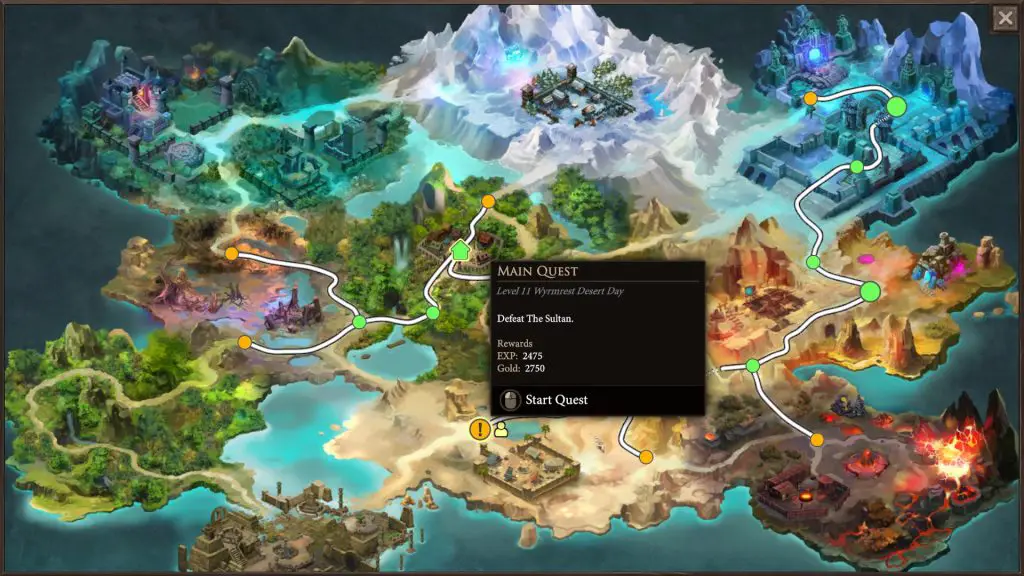
STREAMLINED ROLEPLAYING
► The modular format of QUESTS incorporates a clever dynamic that blunts much of the repetitiveness. This also allows freedom to choose which content to face. These are fairly regular fare such as taking on standard or harder battles. To camp and regain lost health and mana. To hunt for treasure. Call upon traders to buy or sell loot, or initiate events. Nominally interesting QTE-mini games are used to collect resources when they are found traversing a module.
► EVENTS are an interesting inclusion, providing the bulk of what roleplaying there is with a sprinkling of narration, difficult choices, and rewards or penalties for upcoming fights. A noticeably nice touch allows individual characters to choose their own response to some events, rather than just a wholesale party choice. Just like playing D&D some event choices require a d20 roll and stat checks.
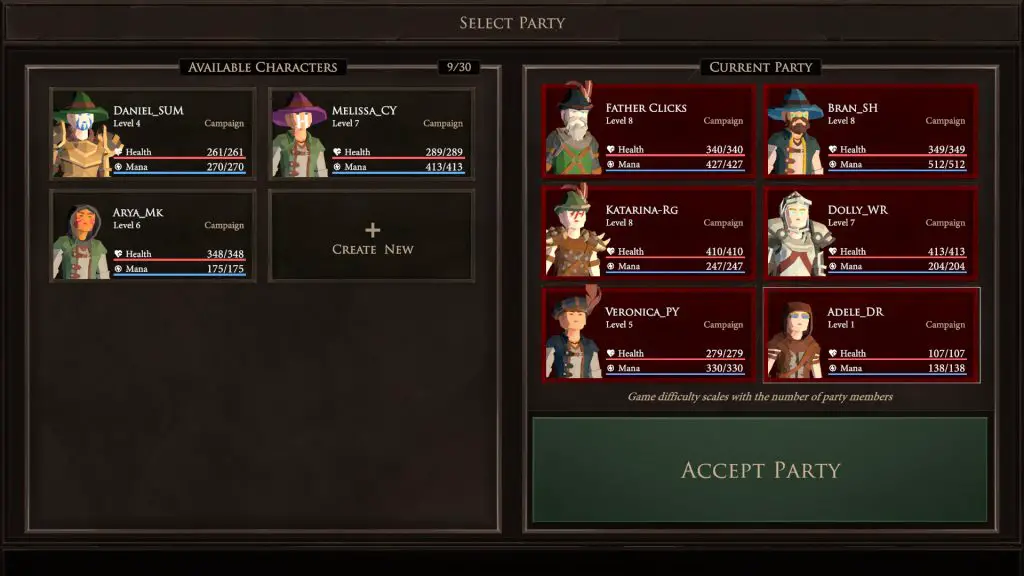
FLEXIBLE Character & PARTY MANAGEMENT
► PARTY MANAGEMENT is flexible and full of potential choices. In the campaign, the player can create up to 30 characters. Players can choose whichever ones they wish to take up to six. New characters can rolled between quests, when re-attempted previously failed quests. Roguelike initially allows only a subset of classes to be created which is expanded upon when the next difficulties is unlocked.
► CHARACTER BUILDING in the campaign is very satisfying given the freedom to multi-class across a mix of x12 sets of skill-trees. Most have at least one really useful combat ability to strife for. Though several have many candidates. They have a proper old school D&D feel providing a host of viable builds, even if the more familiar classes tend to stand out. The small number of stats to invest points in, cover many aspects of what is a complex combat engine under the hood. Characters can even be respecced for the cost of gold acquired in game.
FORTUNES are a neat addition providing an extra level of character customisation through numerous special buffs. Gained at certain levels they are very varied and awarded through events. They are also freely interchangeable when not in combat, though restricted to those that the character themselves unlocked.
Roguelike plays a little different with a choice of four skills randomly provided to choose for each character upon levelling. This can lead to some unwieldly builds that not only feel unbalanced, but worse are sometimes worthless. A remedy of sorts to swap out unwanted skills is provided when the party camps. Completed runs allow the strategic investment of points into a set of power-ups which boost certain stats and abilities on the next run.
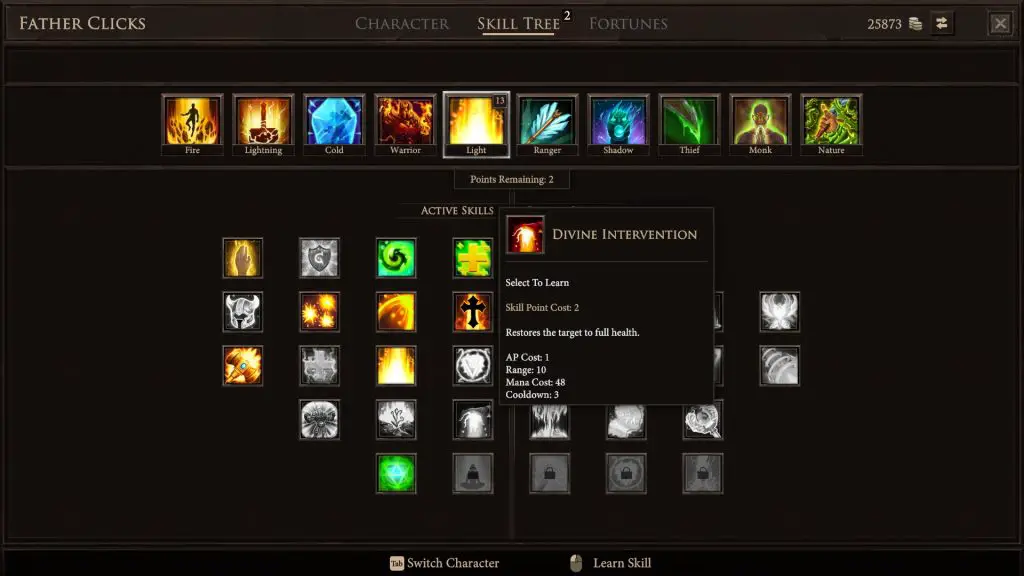
EXHAUSTIVE CRAFTING & INVENTORY
► The INVENTORY system is extensive with a considerable amount of LOOT to collect. These take up six slots, come in several tiers of quality and in the usual categories of armour, weapons, rings, amulets and shields. Removing any class requisite is a superb idea that allows item within the character’s level to be equipped. Having POTIONS use a shared system ensures they are always available to every character, while reducing the need for any micro-management.
With items having a limited shelf life, there is a real need to recycle obsolete inventory over time. This keeps finding new loot an interesting prospect. However, unwanted items can be recycled through a series of linked STASHES that appear in every town Hub. This gives new characters the chance to grab a better item that they may have otherwise found during the current playthrough. These HUBS also provide the customary traders to buy or sell inventory between quests.
► CRAFTING may be easy to overlook, but the sheer number of possibilities to create new items sure spoils the player’s choice. Rings, potions and augments are created at hubs from two large categories of resources. Those that choose to embrace this feature are likely to sink a lot of time and effort due to the sheer size of scope. It viable to bypass this aspect of the game without too much effect.

TURN-BASED ‘LITE’ TACTICAL COMBAT
► BATTLEFIELDS provide a healthy amount of tactical considerations. They possess an organic quality since they spawn from the maps being traversed by the party. A plentiful amount of shrines provide varying tactical advantages for characters or enemies within their boundaries. Power-ups spawn around the map to provide the incentive for characters to reposition during encounters. Another nice touch is to have more than just exploding barrels, such as healing or smoke to augment the ability to dodge.
► Tactical depth in TURN-BASED COMBAT comes from an emphasis on class abilities. Cooldowns and mana restrict their use. Attack types vary from single or multiple targeting to those with an area-of-effect. Subtle difference amplify the variety. Some come with instant based damage. Others with damage over time. Class-based states can be stacked on targets to enhance certain attacks, but sadly there are no chaining or combos to generate any amount of insane destruction.
Battlefield shrines, collectables and attack range affect positioning. As does line-of-sight and avoiding enemy area damage. Solo play is an IGOUGO affair. Simultaneous actions are only applicable in coop. The number of individual attacks is limited for most classes. When more are gained combat definitely becomes more satisfying. There’s a lot of fun to be had taking on different mobs with different party selections.

NO FRIENDS. JUST FOES
► ENEMIES are a diverse menagerie of conventional fantasy opponents and a number of unconventional ones. Due to the numbers its possible rarely encounter the same enemies across a quest or even the campaign. There are five ranks from bosses to fodder. The higher echelons can be very spongy. A good number rely on summoning mobs to supplement their attacking potential. Devastating area-effect attacks can be real tricky to counter. A few bosses can spam summons, area effect abilities and have uniform resistances and the periodic heal, which together easily cause party wipes.
► The AI is simple yet robust and makes solid use of mob attacks or abilities. Its preference for damaged characters is only overridden by adjacent opponents. It doesn’t seem to use potions and the use of healing is rare. The use of area effect attacks, self-buffs, spawning allies and self-healing makes some of the bosses really formidable.
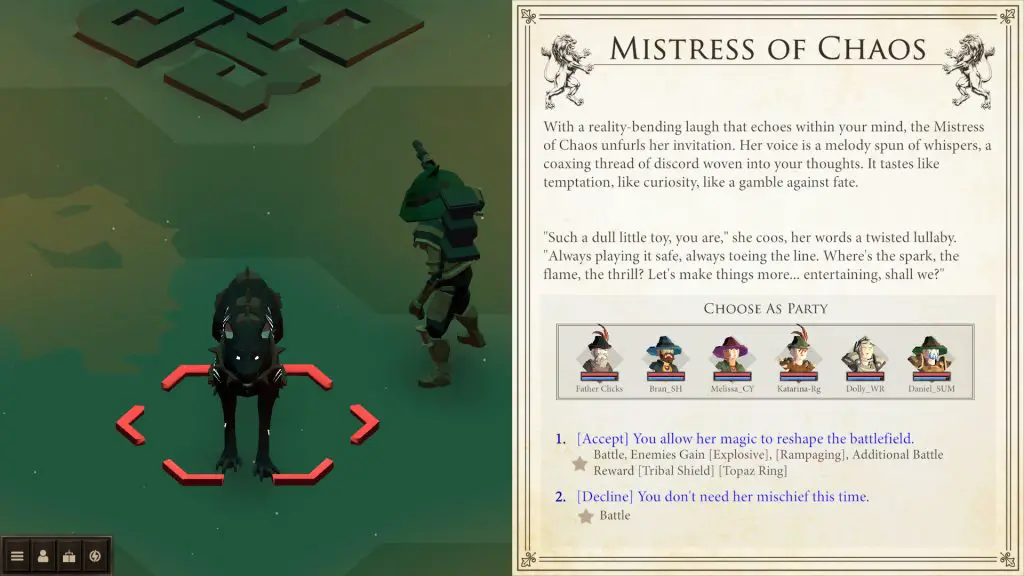
TECHNICAL
► ONLINE PLAY for both modes is possible. Games can be played locally or over the internet and password protected. During my time with the game there were at least a few online games. Some were even open. Campaigns were more popular than roguelike games. Given their modular designs both modes seem suitable for multiplayer, though roguelike is a better fit for casual hook-ups or for quicker games.
► AUDIOVISUALS are better than first glance. While not the highest quality, these low poly GRAPHICS have a certain Torchlight quality. Their comparative asset form is taken up a notch with the lightest application of of textures. Some of the more powerful abilities have decent animations. The way character appearance alters when specific inventory when equipped is neat. The SOUNDTRACK is amiable in parts as some regions have scores that fit better or that stand out from the herd.
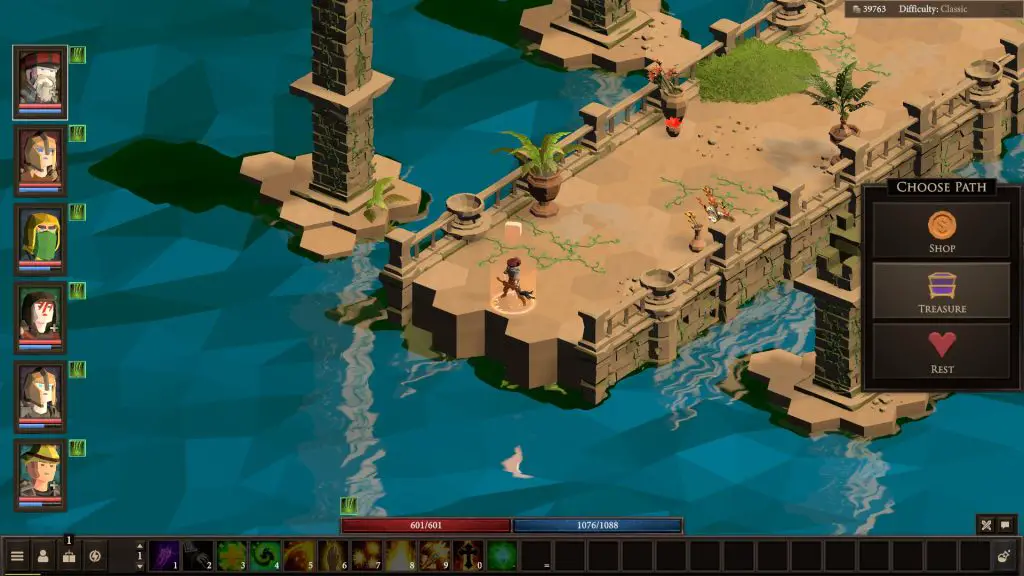
COMPLEXITY
🔶 ACCESSIBILITY – Overall the game is uncomplicated enough for most players to pick-up. Tutorials come in the form of info-screens that pop-up when new concepts are introduced. These seem UI centric. Though a few aspects are not completely explained.
🔶 DIFFICULTY – x6 difficulties offer an amazing amount of challenge. The highest being purposely unfair. These can be changed during the campaign. Classic difficulty was initially easy enough, though became noticeably harder rather quickly. Overall quest completion feels within reach apart from those boss that are ‘over-scaled.’ The Mistress of Chaos encounter modifier is optional, but a great way to mix up the challenge during the adventure. Permadeath, is optional when creating characters.
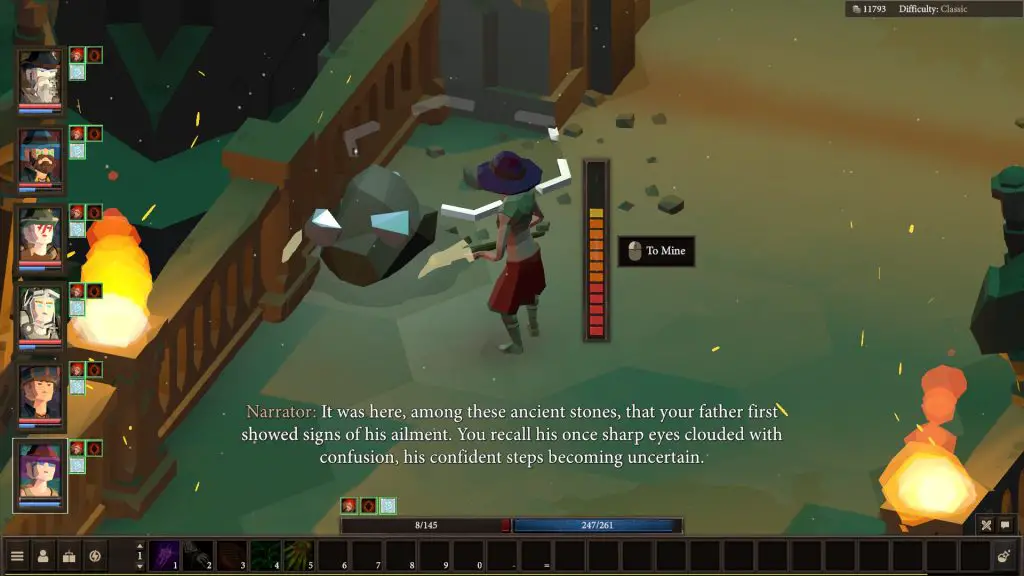
🔶 BALANCE – With so many factors contributing this varies from campaign to quest to battle. Starts fine, but by mid-game there is a noticeable imbalance. Much depends on which bosses are faced and at what level and with what kind of party. Roguelike feels more skewed due to its embracing of RNG in much of its framework.
🔶 PACE – The campaign allows players to set their own tempo by choosing which quests to attempt. Roguelike feels more consistent by forcing the completion of every quest put before the player’s party.
🔶 SCALING – A substantial question mark hangs over whether the auto-scaling feature. It also doesn’t seem to work well enough when downsizing from a party six to one or two. Enemies are overly spongy, especially those have the trifecta of summon spamming, healing and indestructability.
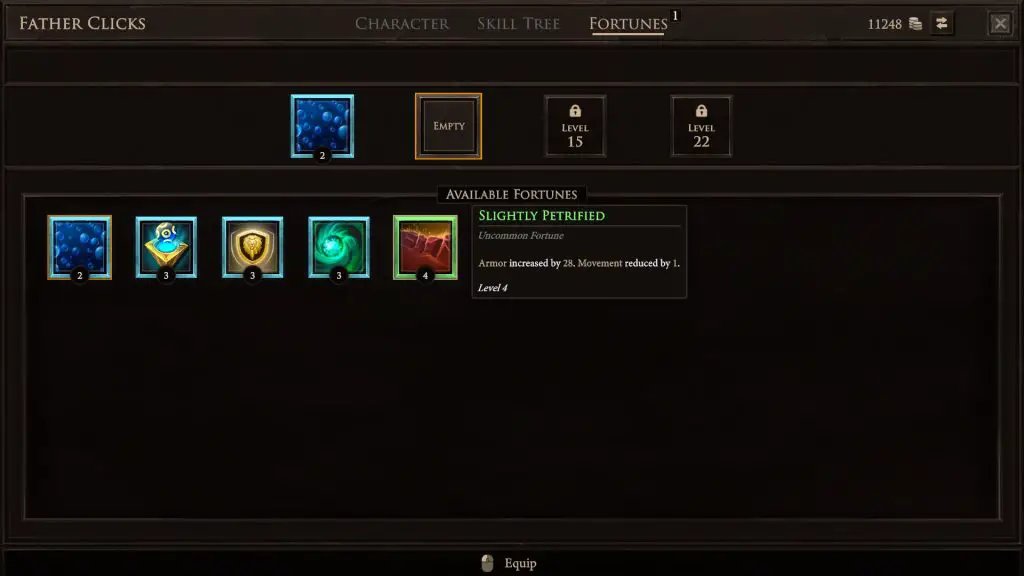
STAYING POWER
🟨 REPLAY VALUE – The campaign’s modular quest design gives it a larger degree of replayability than would otherwise be expected. Being able to flip between any number of characters for any given quest or roll a new party amplifies this. Character customisation is enormous due to the choices allowed by skill selection and multi-classing. Roguelike may be more sequential in its format, but the strong use of RNG offers a strong diverse experience once the campaign has been completed.
🟨 LONGEVITY – Modes, modular design and genuine replay value all contribute to a ton of potential long term value, despite there being no achievements. When these eventually come there will be even more incentive to keep playing. A strong diverse set of content, huge range of enemies and events reduce much of the feeling of repetition and familiarity that is bound to occur over time.
PRODUCTION
🟣 QUALITY – Much of the early bugs and issues were addressed though a substantial number seems to remain. These are sporadic across features from single-player to local coop. Bugs vary from serious to benign. Exploits also currently exist. A few UI issues such as no classes displayed and disappearing tooltips can cause confusion. Major patching efforts stopped around April 2024. Additional content, some rebalancing, stronger bosses and Steam achievements have been announced for the near future. A new skill category will be added as a DLC.
🟣 STABILITY – 1x crash when choosing powerups in roguelike mode was experienced.
🟣 STEAM – Cloud saving. Overlay screenshot capture. Full controller support.
🟣 OPTIMISATION – Run consistently at 60 fps throughout. Stutters infrequently but consistently for some combat ability animations. Long initial load times. My sessions rarely closed properly.

VERDICT
Stolen Realm is a surprising good, if flawed table-top RPG. One that focuses on engaging and streamlined gameplay with lite tactical combat. Its clever use of two modes expands on existing sizeable content to deliver two different styles of play. Its modular design gives excellent replay value, underscoring its looter-crawling with a large host of enemies and inventory. Both solo and online play give the best of what ever world the player desires. Though its biggest positive is the scope of multi-classing characters.
Of the bugs there are and there are many, none greatly affected my playthrough. Not all classes have viably strong abilities against very spongy bosses. The biggest issue is the much the vaunted auto-scaling feature that is supposed to balance the challenge depending on party size. This did not always work as intended, instead creating some very grindy and in some cases very frustrating encounters. Keep in mind that this may be addressed in a recently announced future update.
Overall Stolen Realm seems a WORTHWHILE purchase, but if its issues were addressed it would certainly warrant a higher rating.

